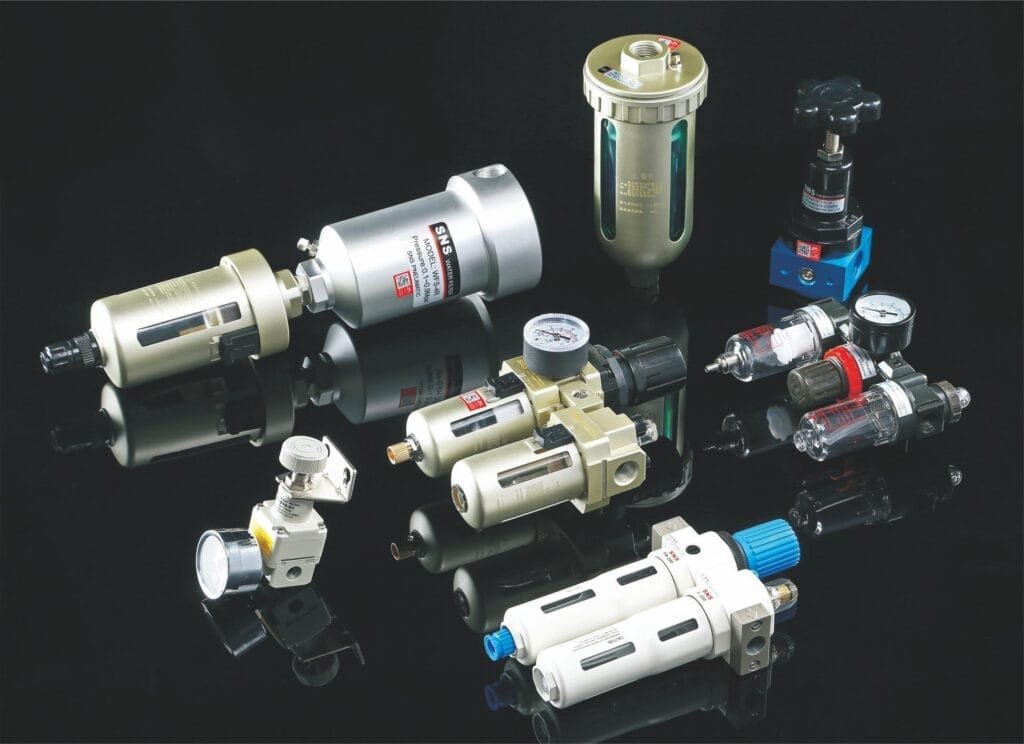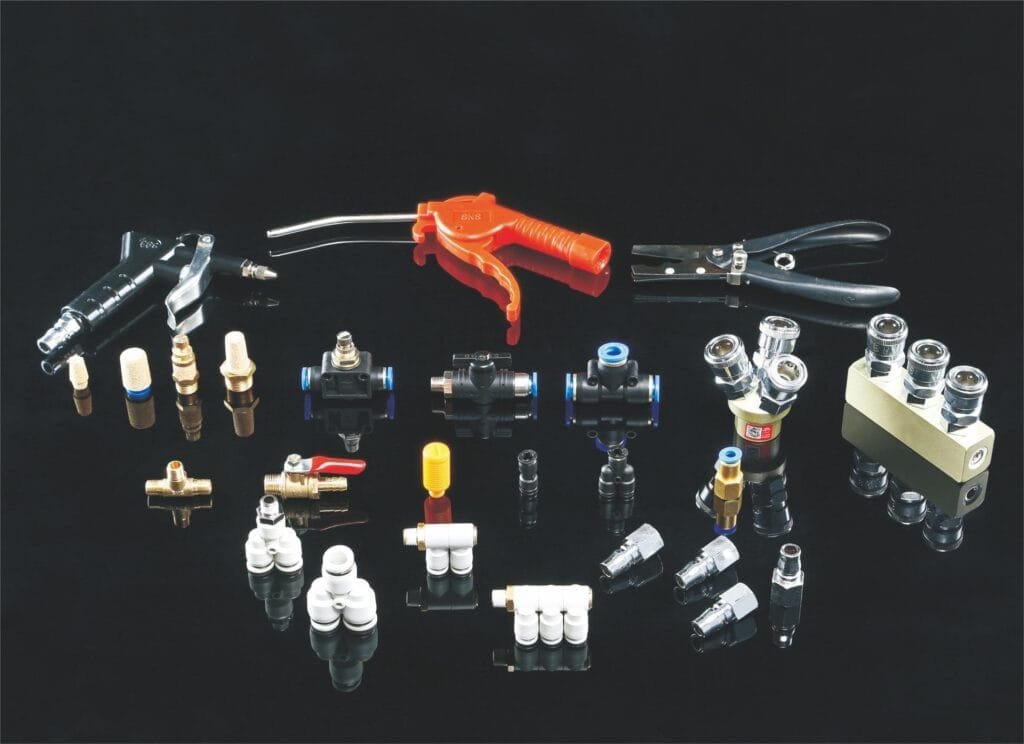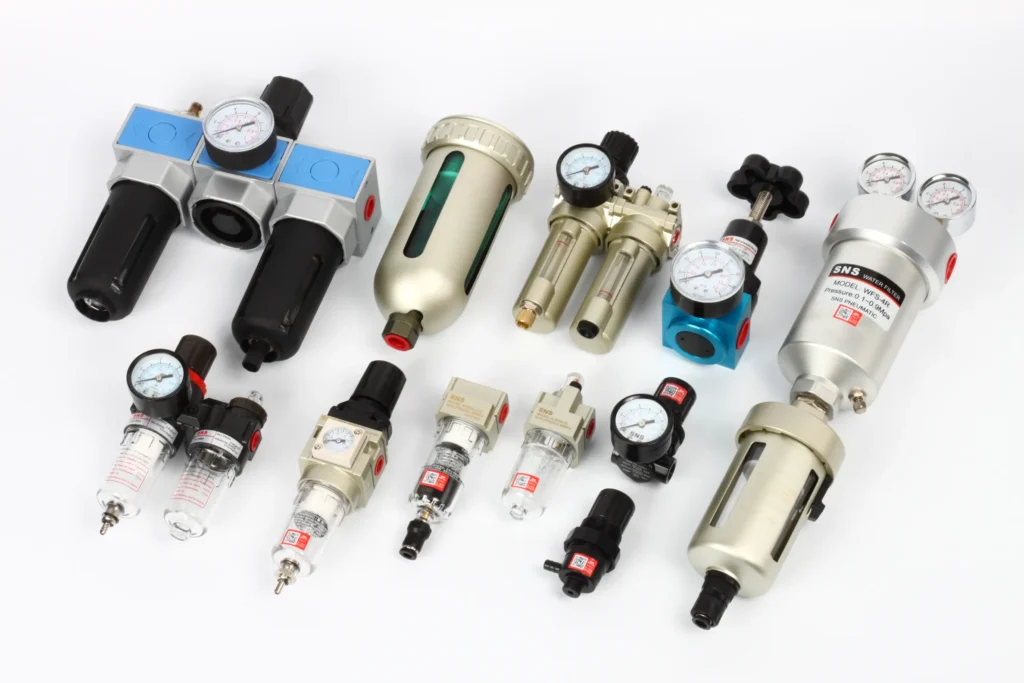What Is A Pneumatic Press
A pneumatic press is a type of machine that utilizes compressed air to exert force on an object, often used for pressing, forming, or assembling parts. Unlike hydraulic or mechanical presses, it operates using air pressure to achieve the desired force.
Pneumatic presses offer a unique combination of speed, efficiency, and adaptability in various industrial applications. They stand out for their clean operation and ease of use, making them a valuable tool in manufacturing and assembly processes.
What Is A Pneumatic Press?
A pneumatic press is a machine powered by compressed air. Unlike mechanical or hydraulic presses that rely on electric motors or hydraulic fluid, a pneumatic press uses air pressure to exert force on an object. This force can be adjusted easily by changing the air pressure, providing versatility in its operation. The core principle involves converting the energy stored in compressed air into mechanical energy.
What Does A Pneumatic Press Do?
A pneumatic press uses compressed air to generate force. This force applies pressure to workpieces for various operations. It manipulates materials by pressing, stamping, or forming them. The primary function is transforming material shapes or assembling components with precision.
How Does Pneumatic Press Work?
A pneumatic press operates using compressed air. Air compressors generate this air pressure. The press’s main function is to convert this air pressure into mechanical energy.
The process begins when the operator activates the press. Compressed air flows into a cylinder through a valve. Inside this cylinder, there is a piston. As air pressure builds up behind the piston, it starts to move. This movement generates force.
This force then acts on an object placed in the press. The object can be shaped, bent, or cut depending on the die attached to the press. After completing the cycle, exhaust valves release the used air from the cylinder. This resets the system for another operation.

Components Of Pneumatic Press
A pneumatic press consists of several key components. Each plays a crucial role in its operation.
Air Compressor: Generates compressed air. This is the core of the system, providing the necessary force.
Cylinders/Pistons: Convert compressed air into mechanical energy. They move to exert pressure or force as required.
Valves: Control the flow of air. These include directional control valves that guide air flow and speed controllers that adjust the velocity.
Actuator: Translates the energy into motion. Acts directly on the object being pressed or shaped.
Frame: Supports all other components. It must be robust to withstand pressure without bending or breaking.
Control System: Manages operations. Can be manual, semi-automatic, or fully automatic, enabling precise control over pressing actions.
Benefits Of Pneumatic Press
Precise Control
Pneumatic presses are celebrated for their ability to deliver exact speed and pressure adjustments, empowering users with precision control over their operations.
High Efficiency
These presses stand out for their operational efficiency, utilizing compressed air to achieve effective performance outcomes.
Cleaner Work Environment
Opting for compressed air as a power source, pneumatic presses contribute to a cleaner workplace, avoiding the mess and potential hazards associated with oil-based systems.
Lower Maintenance
The simpler mechanism inherent in pneumatic systems translates to reduced maintenance needs, saving time and resources.
Cost-Effectiveness
Pneumatic presses are not only more affordable to purchase but also cheaper to operate. The use of air—an inexpensive and abundantly available resource—cuts down running costs significantly.
Versatility
Adaptable to a plethora of tasks, these presses can easily adjust to different speeds and pressures, catering to specific job requirements with ease and enhancing productivity.
Safety Features
Designed with safety in mind, pneumatic presses reduce the risk of fire and minimize fluid leaks and contamination, ensuring a safer work environment.
Noise Reduction
These presses generate less noise compared to other industrial machinery, fostering a more agreeable work atmosphere that is less disruptive.
Environmental Footprint
Pneumatic presses have a smaller environmental impact, benefitting from the absence of hazardous fluid disposal or treatment requirements.
Applications Of Pneumatic Press
Automotive Manufacturing
In automotive assembly, pneumatic presses are vital for efficiently attaching parts such as bearings and bushings, leveraging their precision and force control to ensure high-quality assembly.
Electronics Industry
The electronics sector relies on the exact force provided by pneumatic presses for assembling small, delicate components in circuit boards or mobile devices, where consistency and controlled force are essential.
Textile Companies
Pneumatic presses are used in the textile industry for cutting fabrics and applying prints or designs, offering accurate cuts and uniform design applications across different textiles.
Packaging Sector
These presses play a critical role in forming and sealing containers in the packaging industry, enabling uniform shaping of packages for food packaging or cosmetic products with precision.
Metalworking
In metalworking facilities, pneumatic presses are employed for bending, punching, and shearing metal sheets. Their pressure adaptability allows for fine adjustments to work with various material densities and thicknesses.
Aerospace Engineering
The aerospace industry uses pneumatic presses for fabricating components, where the high reliability and precision of pneumatic technology meet the stringent standards required in aerospace component manufacturing.

How Do I Choose The Right Pneumatic Press For My Needs?
Choosing the right pneumatic press involves understanding your specific needs and the key features of these machines. The capacity, speed, size, and control options are critical factors to consider. A thorough analysis of these aspects will ensure you select a press that matches your requirements efficiently.
Assess Your Application Requirements: Identify what tasks the pneumatic press will perform. Different applications demand varying force and precision levels. Knowing whether you’ll be embossing, pressing bearings, or forming metals guides your choice effectively.
Understand Force Capacity: Force capacity is paramount in selecting a pneumatic press. It’s measured in tons or pounds. Ensure the press you choose can handle the maximum force your applications require.
Consider Press Size: Size matters when it comes to choosing a press for your workspace. Measure the space where you plan to place the machine. Account for additional room needed for operation and maintenance.
Speed Requirements: Speed is another vital consideration. Review how fast the press can complete cycles while maintaining accuracy and consistency.
Control Options: Modern pneumatic presses feature various control options ranging from manual to fully automatic systems. Decide on which level of control suits your operation best for productivity and safety.
Assess Additional Features: Some pneumatic presses offer extra features like adjustable pressure settings, temperature controls, or built-in safety measures. Evaluate which additional features could enhance your operations.
What Is The Difference Between A Pneumatic Press And A Hydraulic Press?
Operating Mechanism
- Pneumatic Press: This type of press uses compressed air to exert force on an object.
- Hydraulic Press: In contrast, a hydraulic press operates using liquid pressure.
Operational Speed
- Pneumatic Press: They are typically faster due to the rapid compression and decompression of air.
- Hydraulic Press: These presses move more slowly due to the viscosity of the liquid used.
Force Generation
- Pneumatic Press: They generate less force compared to hydraulic presses.
- Hydraulic Press: These presses can achieve high pressures due to the nature of liquids allowing for more forceful compression than gas.
Maintenance Needs
- Pneumatic Press: These systems are generally simpler and require less maintenance.
- Hydraulic Press: In contrast, hydraulic systems can require more maintenance due to potential fluid leaks or changes.
Environmental Considerations
- Pneumatic Press: Being air-operated makes these presses cleaner.
- Hydraulic Press: These presses can pose environmental risks if there’s a leak, due to the oil-based fluids used.
Noise Levels
- Pneumatic Press: These presses typically operate louder due to the exhaust of compressed air.
- Hydraulic Press: Hydraulic systems often run quieter since their operations involve less volatile movements.
Cost and Energy Efficiency
- Pneumatic Press: Pneumatic systems usually involve a lower initial investment and may be more energy-efficient for lighter duty cycles.
- Hydraulic Press: Despite their higher upfront cost, hydraulic presses can offer better value for tasks requiring substantial force and may be more energy-efficient when continuously exerting high levels of force.
What Is The Difference Between Pneumatic Press And Power Press?
Power Source and Force Application
- Pneumatic Press: These presses use compressed air to create force, which is typically suited for lightweight and precise tasks due to its simplicity.
- Power Press: Power presses can utilise various power sources, making them more versatile for heavy-duty operations. Mechanical, hydraulic, or electrically powered versions are common.
Control and Adjustability
- Pneumatic Press: They offer easy setup for repetitive operations but provide limited force options due to the nature of air compression. They have a quick response time, which makes them apt for fast-paced environments requiring moderate accuracy.
- Power Press: These presses offer greater force flexibility and higher maximum loads, ideal for intensive manufacturing processes needing deep customization of pressure settings. However, adjustment can be complex as it involves either intricate machinery setups or fluid dynamics in hydraulic versions.
Energy Use
- Pneumatic Press: These systems are generally more energy-efficient for smaller operations as they can simply transform compressed air into mechanical energy.
- Power Press: Power presses tend to consume more energy but justify this with their ability to handle heavier duties.
Operation Noise
- Pneumatic Press: They typically generate less operation noise.
- Power Press: Some types of power presses, particularly mechanical ones, can produce significant noise that may necessitate noise mitigation measures in working environments.
In Conclusion
A pneumatic press utilizes compressed air to apply force or move objects, offering a versatile and efficient solution for various industrial applications.
Discover the precision and efficiency a pneumatic press can bring to your operations by exploring our range today. Contact us to find the ideal pneumatic press solution tailored to your specific needs.





